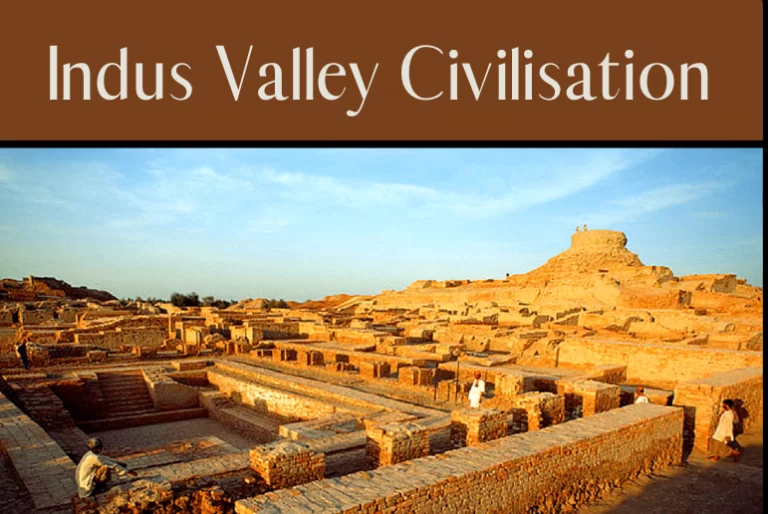
Any major environmental change, such as deforestation, flooding or droughts due to a river changing course, could have had disastrous effects on Indus Valley society, such as crop failures, starvation, and disease
Riya
The Indus Valley Civilization declined around 1800 BCE due to certain factors that include Aryan Invasion, Climate Change and Migration. The Civilization eventually disappeared along with its two great cities, Mohenjo-Daro and Harappa who lend their name to the Indus Valley people because they were civilization’s first cities to be discovered by modern archaeologists.
Archaeological evidence indicates that trade with Mesopotamia, located largely in modern Iraq seemed to have ended. The advanced drainage system and baths of the great cities were built over or blocked. Writing began to disappear and the standardized weights and measures used for trade and taxation fell out of use.
Scholars have put forth differing theories to explain the disappearance of the Indus Valley Civilization, including an Aryan Invasion Theory and Climate Change marked by overwhelming monsoons.
The Aryan Invasion Theory (c. 1800-1500 BC)
The Indus Valley Civilization may have met its demise due to invasion. According to one theory by British archaeologist Mortimer Wheeler, a nomadic, Indo-European tribe, called the Aryans, suddenly overwhelmed and conquered the Indus River Valley.
Wheeler, who was Director-General of the Archaeological Survey of India from 1944 to 1948, posited that many unburied corpses found in the top levels of the Mohenjo-Daro archaeological site were victims of war. The theory suggested that by using horses and more advanced weapons against the peaceful Indus Civilization people, the Aryans may have easily defeated them.
Yet shortly after Wheeler proposed his theory, other scholars dismissed it by explaining that the skeletons were not victims of invasion massacres, but rather the remains of hasty burials. Wheeler himself eventually admitted that the theory could not be proven and the skeletons indicated only a final phase of human occupation, with the decay of the city structures likely a result of it becoming uninhabited.
Various elements of the Indus Civilization are found in later cultures, suggesting the Civilization did not disappear suddenly due to an invasion. Many scholars came to believe in an Indo-Aryan Migration theory stating that the Harappan culture was assimilated during a migration of the Aryan people into northwest India.
The Climate Change Theory (c. 1800-1500 BC)
Other scholars suggest the collapse of Harappan society resulted from climate change. Some experts believe the drying of the Saraswati River, which began around 1900 BCE, was the main cause of climate change, while others conclude that a great flood struck the area.
Any major environmental change, such as deforestation, flooding or droughts due to a river changing course, could have had disastrous effects on Indus Valley society, such as crop failures, starvation, and disease. Skeletal evidence suggests many people died from malaria, which is most often spread by mosquitoes. This also would have caused a breakdown in the economy and civic order within the urban areas.
Another disastrous change in the Harappan climate might have been eastward-moving monsoons or winds that bring heavy rains. Monsoons can be both helpful and detrimental to a climate, depending on whether they support or destroy vegetation and agriculture. The monsoons that came to the Indus River Valley aided the growth of agricultural surpluses, which supported the development of cities, such as Harappa. The population came to rely on seasonal monsoons rather than irrigation, and as the monsoons shifted eastward, the water supply would have dried up.
By 1800 BCE, the Indus Valley climate grew cooler and drier, and a tectonic event may have diverted the Ghaggar Hakra river system toward the Ganges Plain. The Harappans may have migrated toward the Ganges basin in the east, where they established villages and isolated farms.
These small communities could not produce the same agricultural surpluses to support large cities. With the reduced production of goods, there was a decline in trade with Egypt and Mesopotamia. By around 1700 BCE, most of the Indus Valley Civilization cities had been abandoned.
[Excerpts from a blog on Indus Valley Civilization]
_________________
Riya is currently an undergraduate who completed her BA honors in Pol science from the University of Delhi.
Courtesy: Drishti – The Vision Foundation